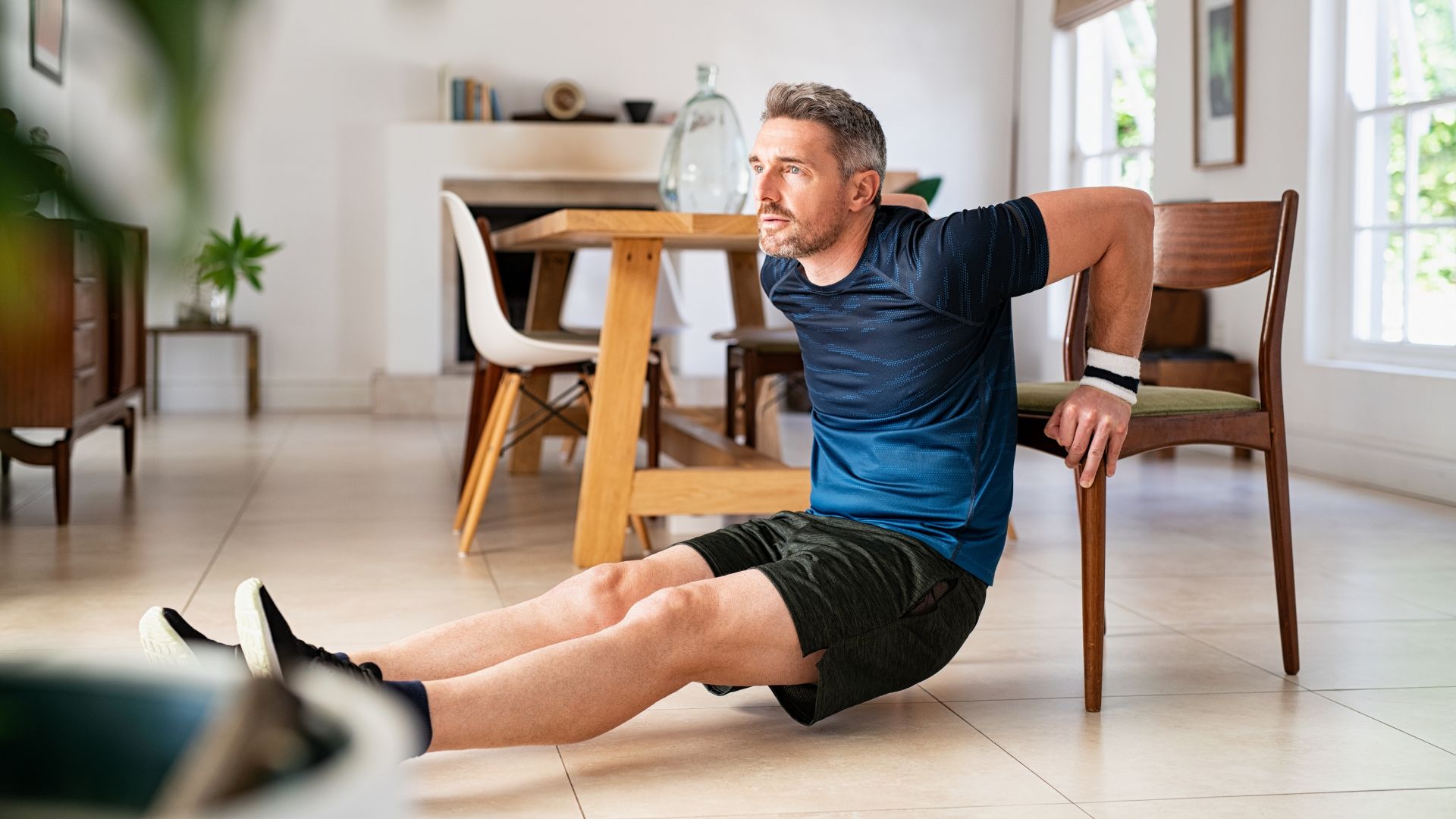Retirement from professional football often brings a seismic shift in lifestyle, and for many former players, that includes a battle with the scale. Amir Madison, a retired NFL player, found himself facing this challenge after hanging up his cleats. But instead of turning to conventional diets or grueling gym routines, he discovered an unexpected practice—yoga—that transformed his body and mind, helping him shed over 40 pounds. This article dives into Amir’s inspiring journey, explores the power of yoga for weight loss, and offers practical tips for anyone looking to follow in his footsteps. With a blend of personal insights, expert advice, and actionable strategies, you’ll see why this ancient practice is a game-changer for modern fitness.
Amir Madison’s Weight Loss Journey
After years of bulking up to compete in the NFL, Amir Madison retired carrying a frame that no longer served his everyday life. Tipping the scales at over 225 pounds, he felt sluggish and disconnected from his body. Then, yoga entered the picture—not as a quick fix, but as a holistic practice that reshaped his health and led to a 40-pound weight loss.
From Gridiron to Yoga Mat
Amir’s transition wasn’t easy. The high-calorie diets and intense strength training of his football days were a stark contrast to the mindful movements of yoga. But as he shared in a Men’s Health interview, stepping out of his comfort zone was key. “Don’t be afraid to try something new,” he said, reflecting on how yoga’s focus on flexibility and mental clarity became his unexpected ally.
Why Yoga Stood Out
Unlike the high-impact workouts Amir was used to, yoga offered a low-stress way to move his body while addressing mental health. The practice’s emphasis on breathwork and mindfulness helped him manage stress eating, a common post-retirement struggle. This unique combination made yoga not just a workout, but a lifestyle shift that fueled his transformation.
The Science Behind Yoga for Weight Loss
Yoga might seem like a gentle practice, but its impact on weight loss is backed by science. Studies show it reduces cortisol levels, improves metabolism, and promotes mindful eating—key factors in shedding pounds. For Amir, yoga’s holistic approach was the perfect antidote to the physical and mental toll of his NFL career.
How Yoga Burns Calories
While yoga may not burn as many calories as a HIIT session, certain styles like Vinyasa or Power Yoga can torch 300–600 calories per hour. The physical effort of holding poses builds muscle, which boosts metabolism over time. Amir found that consistent practice helped him stay active without the joint pain he’d experienced from years of football.
Stress Reduction and Weight Management
High stress can lead to weight gain by increasing cortisol, a hormone that promotes fat storage. A 2018 study in Frontiers in Immunology found yoga lowers cortisol levels, helping regulate appetite. Amir noted that yoga’s breathing exercises curbed his cravings, making it easier to stick to healthier food choices.
Building Muscle and Flexibility
Yoga poses like Warrior II or Plank strengthen core muscles and improve flexibility, which enhances overall mobility. For retired athletes like Amir, this meant less strain on joints and a sustainable way to stay active. Over time, his increased muscle mass helped him burn more calories even at rest.
Amir’s Yoga Routine: A Closer Look
Amir’s routine wasn’t about mastering complex poses overnight. He started with beginner-friendly classes, gradually incorporating more challenging flows. His commitment to consistency—practicing 4–5 times a week—made all the difference. Let’s break down how he built his practice and how you can too.
Beginner-Friendly Yoga Poses
Amir started with simple poses to ease into yoga. Poses like Downward Dog, Child’s Pose, and Cat-Cow helped him build strength and flexibility without overwhelming his body. These low-impact movements were perfect for transitioning from high-intensity football training.
Sample Beginner Yoga Sequence
- Downward Dog: Stretches hamstrings and strengthens shoulders.
- Child’s Pose: Relaxes the body and promotes mindfulness.
- Cat-Cow: Improves spinal flexibility and core strength.
- Mountain Pose: Enhances posture and balance.
Incorporating Yoga Styles
Amir explored various yoga styles to keep his practice engaging. Vinyasa offered a cardio boost, while Yin Yoga helped with recovery and flexibility. He found that mixing styles kept him motivated and addressed different aspects of his fitness goals.
Tools for Starting Yoga
| Tool | Purpose | Where to Get |
|---|---|---|
| Yoga Mat | Provides grip and cushioning | Amazon, Target ($15–$50) |
| Yoga Blocks | Supports balance and alignment | Walmart, REI ($10–$20) |
| Online Classes | Guided sessions for beginners | Yoga With Adriene, Glo ($10–$20/month) |
Best Tools: A Manduka PRO mat ($100) is durable for daily use, but a $20 Gaiam mat works for beginners.
Benefits of Yoga Beyond Weight Loss
Yoga did more than help Amir lose weight—it transformed his overall well-being. From mental clarity to improved mobility, the practice offered benefits that went far beyond the scale. Here’s why it’s a powerful tool for retired athletes and anyone seeking a healthier life.
Mental Health and Mindfulness
Yoga’s meditative aspects helped Amir manage post-retirement stress. Practices like guided meditation and breathwork reduced anxiety, which often triggers overeating. He found that a 10-minute meditation after practice left him feeling centered and in control.
Improved Mobility and Joint Health
Years of football took a toll on Amir’s joints, but yoga’s gentle stretches improved his range of motion. Poses like Pigeon and Thread the Needle alleviated hip and lower back pain, making daily activities easier. This was a game-changer for maintaining an active lifestyle.
Community and Connection
Amir’s journey wasn’t solitary—he joined a local yoga studio, where the community kept him accountable. Sharing his progress with others inspired him to stick with it. He even founded a nonprofit to make yoga accessible to underserved communities, showing his commitment to giving back.
Pros and Cons of Yoga for Weight Loss
Pros:
- Low-impact, joint-friendly exercise.
- Improves mental health and reduces stress eating.
- Accessible for all fitness levels.
- Builds muscle and flexibility over time.
Cons:
- Slower calorie burn compared to high-intensity workouts.
- Requires consistency for noticeable results.
- Some classes or equipment can be costly.
Comparison: Yoga vs. Traditional Weight Loss Methods
| Method | Calorie Burn/Hour | Joint Impact | Mental Health Benefits |
|---|---|---|---|
| Yoga | 300–600 | Low | High (stress reduction, mindfulness) |
| Running | 600–800 | High | Moderate (endorphin boost) |
| Weightlifting | 400–600 | Moderate | Low (focus on physical) |
Why Yoga Wins for Retired Athletes: Its low-impact nature and mental health benefits make it ideal for those recovering from years of physical strain, like Amir.
People Also Ask (PAA) Section
Can Yoga Really Help You Lose Weight?
Yes, yoga can aid weight loss by burning calories, reducing stress, and promoting mindful eating. Styles like Vinyasa or Power Yoga burn 300–600 calories per hour, while mindfulness practices curb emotional eating. Consistency is key for results.
How Did Amir Madison Lose 40 Pounds?
Amir Madison lost over 40 pounds through yoga, focusing on Vinyasa and Yin styles, combined with mindful eating. His practice reduced stress and improved mobility, helping him maintain a healthier lifestyle post-NFL.
Is Yoga Better Than Cardio for Weight Loss?
Yoga burns fewer calories than cardio but offers unique benefits like stress reduction and flexibility. It’s better for those seeking a low-impact, sustainable approach, especially for joint health. Combining both can maximize results.
Where Can I Find Yoga Classes for Beginners?
Online platforms like Yoga With Adriene (free on YouTube) or Glo ($20/month) offer beginner-friendly classes. Local studios or community centers also provide affordable options—check Yelp or ClassPass for nearby sessions.
Practical Tips for Starting Your Yoga Journey
Starting yoga can feel intimidating, but it’s easier than you think. Amir’s success came from small, consistent steps, and you can follow suit. Here’s how to begin your own yoga practice, whether you’re a retired athlete or a fitness newbie.
Find the Right Class
Look for beginner classes at local studios or online platforms. Free YouTube channels like Yoga With Adriene are great for starting at home. Apps like Glo or Down Dog offer guided sessions for $10–$20/month.
Set Realistic Goals
Aim for 3–4 sessions per week, starting with 20–30 minutes. Focus on how you feel, not just weight loss. Amir didn’t obsess over the scale—he prioritized feeling better, and the pounds followed naturally.
Create a Home Practice Space
A quiet corner with a yoga mat and some natural light is all you need. Add blocks or a strap for support. I turned my living room into a mini yoga studio with a $15 mat, and it’s been a game-changer for consistency.
Stay Consistent with a Schedule
Schedule yoga like a meeting—block out time in your calendar. Morning sessions can energize you, while evening practices help you unwind. Amir found that evening flows helped him sleep better, reducing late-night snacking.
Amir’s Diet: A Supporting Role
While yoga was the star of Amir’s transformation, diet played a crucial supporting role. He didn’t follow a restrictive plan but focused on whole foods and portion control. This balanced approach complemented his yoga practice and sustained his weight loss.
Key Dietary Changes
- More Plants: Incorporated fruits, vegetables, and legumes for fiber and nutrients.
- Lean Proteins: Swapped heavy meats for chicken, fish, or plant-based options.
- Mindful Eating: Used yoga’s mindfulness to avoid emotional eating.
- Hydration: Drank plenty of water to support metabolism and recovery.
Sample Meal Plan
| Meal | Example | Benefits |
|---|---|---|
| Breakfast | Greek yogurt with berries | Protein and antioxidants |
| Lunch | Grilled chicken salad | Lean protein, fiber |
| Dinner | Quinoa with roasted veggies | Nutrient-dense, filling |
| Snack | Almonds or an apple | Healthy fats, natural sugars |
Where to Get Ingredients: Local grocery stores like Whole Foods or Trader Joe’s offer affordable, high-quality produce. Check Thrive Market for online deals.
Challenges and How Amir Overcame Them
Amir’s journey wasn’t without hurdles. From skepticism about yoga to physical limitations from his football days, he faced challenges that many can relate to. Here’s how he tackled them and how you can too.
Overcoming Skepticism
Amir initially thought yoga was “too soft” for an athlete. But after a few classes, he saw its strength-building potential. Trying a free class or watching online tutorials can help you overcome doubts.
Managing Physical Limitations
Years of football left Amir with joint stiffness. He started with gentle poses and used props like blocks to ease into movements. Consult a doctor if you have injuries before starting yoga.
Staying Motivated
Amir joined a yoga community to stay accountable. Finding a friend or group class can keep you motivated. I found that tracking my progress in a journal helped me stay committed, even on tough days.
FAQ Section
How Long Does It Take to See Weight Loss Results with Yoga?
Results vary, but with 3–4 sessions per week, you may see changes in 2–3 months. Yoga’s benefits, like improved energy and reduced stress, often come sooner, supporting long-term weight loss.
Can Beginners Do Yoga for Weight Loss?
Absolutely! Beginners can start with gentle styles like Hatha or Restorative Yoga. Focus on consistency and proper form to build strength and confidence over time.
What Yoga Styles Are Best for Weight Loss?
Vinyasa, Power Yoga, and Ashtanga are great for burning calories due to their dynamic flows. Yin Yoga supports recovery and flexibility, complementing more intense styles.
How Can I Find Affordable Yoga Resources?
Free YouTube channels like Yoga With Adriene or affordable apps like Down Dog ($10/month) are great for beginners. Local community centers often offer low-cost classes—check ClassPass for deals.
Does Yoga Help with Mental Health?
Yes, yoga reduces stress and anxiety through breathwork and meditation. A 2017 study in The Journal of Clinical Psychiatry found yoga improves mood and reduces depression symptoms, aiding overall well-being.
Final Thoughts: Yoga as a Transformative Practice
Amir Madison’s story shows that weight loss isn’t just about the body—it’s about the mind and spirit too. Yoga helped him shed over 40 pounds, but more importantly, it gave him a new lease on life. Whether you’re a retired athlete or just looking to feel better, yoga offers a sustainable, holistic path to health. Try a class, roll out a mat, and see where this unexpected practice takes you. What’s stopping you from starting your own transformation?
External Links:



